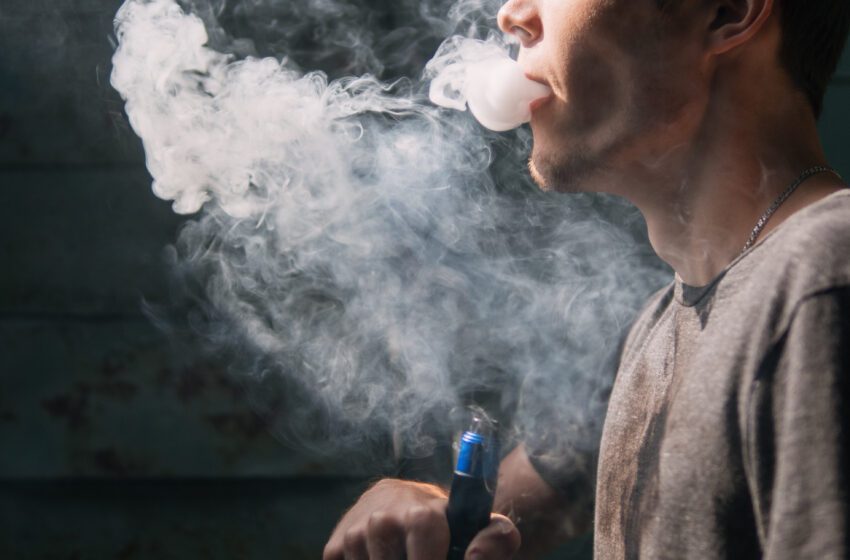
The portrayal of tobacco mathematics is often guided by unreasonable theories.
By George Gay
When, toward the end of last year, I was invited to attend the preview of a documentary titled How Sweden Quit Smoking, it struck me that the title was rather odd because Swedish people had not quit smoking tobacco nor, as far as I was aware, had they stopped inhaling any of the other forms of smoke that are produced in that country.
The documentary’s title was, I guess, based on the odd notion put about in recent years that 5 percent, or thereabouts, equals 0 percent. Once smoking rates come down to about 5 percent, they might as well be regarded as being 0 percent. This, to me, is irrational, but it seems to have been generally accepted, so I shall move on—reluctantly.
After the showing of the documentary, which was directed by Tomasz Agencki on behalf of We Are Innovation and which explored the success that the use of snus had had in replacing smoking in Sweden, thereby hugely reducing cancer rates, a few invited speakers expressed incredulity that, given this success, snus and its derivatives were not being promoted more widely in the world and, indeed, were banned in many places. I, on the other hand, was incredulous at the incredulity expressed because we do not live in a rational world.
Look at it this way: If you are willing to accept the irrational notion that 5 percent equals 0 percent, you should not be surprised when others also hold irrational beliefs. If you live irrationally, you will possibly die that way. Or perhaps not, given that many tobacco commentators believe that certain deaths are “preventable.” Welcome to life through the looking glass.
During the event, hope was expressed that the documentary, which was undoubtedly well made, would change the minds of those in authority opposed to promoting or even allowing the use of snus to help smokers quit their habit. I share that hope, but I have one reservation.
If the documentary does change minds, what does it say about the people, for instance, those in authority in the EU where snus is banned outside Sweden, who were deaf to previous evidence-based approaches around the efficaciousness of snus but were swayed by a documentary, no matter how good? That they are irrational people driven by their passions?
The irrationality that surrounds discussions about smoking and vaping was in full flow today, Jan. 29, as I was listening to Today, one of BBC Radio’s main morning news programs. A story was introduced announcing how the U.K. government intended to bring in a blanket ban on the sale of single-use vapes, purportedly mainly for the sake of protecting young people.
The person who introduced the item said that within months, the sale of single-use vapes to anyone of any age in England, Wales and Scotland should be impossible because of what the government was announcing.
Let’s unwrap that a little. Although it is illegal already in the U.K. to sell vapes to those under 18 years of age and though the story was devoted almost entirely to the issues raised by single-use vapes being sold willy-nilly to young people, the interviewer did not seem to be interested in delving into the reasons why this illegal activity was occurring. And no question was raised as to why, when the law banning the sale of single-use vapes to young people was apparently being flaunted, it was believed that another law would stop sales to young people—and to all and sundry.
Once again, we were being asked to accept the irrational. The news item, as many before it, did all it could to blame vape manufacturers for the sales illegality. It was because the manufacturers were making the packaging of single-use vapes attractive to young people. But it doesn’t take a second’s thought to realize that it doesn’t matter whether the manufacturers paint their packaging sky-blue with pink polka dots, it is illegal to sell those packages to young people. The problem must lie elsewhere.
And, of course, it does. It lies with successive Conservative governments. What we have at present is a proposal that is based on a moral panic stirred up by the media and used by a grateful government that, in an election year, is desperately trying to win kudos and votes by acting to reverse the problems it has created during the past 13 years, one of which is down to its having slashed the budgets of the agencies charged with policing the import and retail sale of vapes.
The four-minute to five-minute BBC item included a one-minute statement by John Dunne, director general of the U.K. Vaping Industry Association, who warned that the proposed ban on single-use vapes would simply drive the business underground, exposing young people to unregulated products. The rest of the time was allocated to an interview with Glyn Potts, the head teacher of Newman Catholic College at Oldham, which has more than 1,500 pupils aged 11 to 16.
In answer to a question, Potts said he believed about 10 percent of the school’s students had tried vapes but that fewer than 30 of them vaped regularly, which could mean that none of them did. But let’s take it that the upper figure of 30 is correct and the school has exactly 1,500 pupils: Now children, 30 divided by 1,500 and multiplied by 100 equals two: 2 percent.
Two percent is less than 5 percent, and 5 percent is 0 percent. Therefore, 2 percent is less than 0 percent. The interviewer, feeling perhaps that the item wasn’t going to plan, chimed in with what appeared to me to be a less than objective observation, saying, “It’s 30 sets of young lungs, isn’t it?” Hmm. Perhaps mention could have been made about the air quality or lack of it outside the school gates.
Two percent is hardly the “youth vaping epidemic” The Guardian newspaper referred to on the same day when writing about the same story, a piece of about 600 words that included the words “youth” three times, “children” five times, “underage” once and “young people” once, all references being to the same group of people as far as I could tell.
But then I should add that the paper said 9 percent of 11-year-olds to 15-year-olds were now vaping, and the proportion of 11-year-old to 17-year-old vapers using single-use vapes had increased almost ninefold during the past two years. How could one take a rational account of the situation from these figures, the only vaping figures presented?
Without details, the second statement is meaningless to the point of being misleading. We are not told how a “vaper” is defined and, often, those opposed to vaping will count young people who have tried to vape just once. Additionally, we cannot tell what the starting point was two years ago. Were there just two vapers and now there are 18? And notice how with the 9 percent figure, we are faced with the opposite problem because we are not told whether that figure has been on the rise or is going down.
If I were feeling really cheeky, I would point out, too, that 9 percent is less than twice 5 percent and therefore less than twice 0 percent, making it 0 percent. Come on, keep up.
Neither does 2 percent reflect the concern about vaping’s becoming “endemic,” apparently expressed by the prime minister, Rishi Sunak. “As any parent or teacher knows, one of the most worrying trends at the moment is the rise in vaping among children, and so we must act before it becomes endemic,” The Guardian quoted Sunak as saying.
Well, a lot of financially well-off parents might feel that way and so might some moderately well-off parents, but the increasing number of parents impoverished by the Sunak and previous Conservative governments probably have more pressing worries.
Kamila Hawthorne, chair of the Royal College of General Practitioners, was quoted in a Dec. 22 front-page story in The Guardian, headed “Revealed: Huge rise in hospital admissions with malnutrition,”as saying: “As a nation, we shouldn’t be having malnourished children. We shouldn’t be having children with rickets. We should not be having people with iron deficiencies or low folic acid …. There’s that sense of this isn’t right; what’s happening here.”
Later in the story, it was said that nutritional deficiencies are particularly concerning in children, with iron and B12 being critical for brain development, which may be compared with the vape story that said only that “doctors are concerned about the unknown [my emphasis] long-term health impact of vaping on young people and their developing respiratory systems, including nicotine addiction, which can cause anxiety and withdrawal headaches.”
The Guardian’s malnutrition piece bled to inside pages, where another story was headed “‘Heartbreaking’: Teachers tell of children with bowed legs and no winter coat,” and where a pull quote had a head teacher saying, “One child came in so malnourished, I had to carry them to the doctor myself.”
Despite such shocking news, the malnutrition story did not quote Sunak as saying this was a most worrying trend and, indeed, he might not have been asked to comment. But it is clear that the Conservative government, which has been in power since 2010, has a chilling record on child poverty and owns this state of affairs. It certainly seems not to be intent on bringing in quick-fired legislation on nutrition as it is in the case of single-use vapes.
Further, it seems that consecutive Conservative administrations, having disabled the U.K.’s ambulance service and most other public services with its backward-focused austerity program, are now relying on head teachers to carry or otherwise get patients to hospitals. It seems that the head teacher who carried the child too weak to walk was not alone.
Potts had his own story to tell after he was asked the somewhat leading question: “Have you seen any serious complications or problems arising from the use of vaping, because there have been children, haven’t there, who’ve been hospitalized?” Fortunately for the interviewer, Potts has a good memory. He said that two and a half years ago, a pupil entering the school grounds on a bus, egged on by friends, took a huge “gulp” on a vape he had “stolen” from an older brother and, on leaving the bus, collapsed and was taken to the hospital.
Two children collapse at different schools, and the reasons behind those collapses provoke different reactions from the government. In one case, indifference; in the other, panic. What is going on here? Well, this is an election year in the U.K. I would speculate that the parents of the 18 young people spluttering over their vapes could well be persuaded to vote for Sunak’s party. In contrast, the parents of the young people without enough to eat have possibly been disenfranchised by the government’s recent changes to electoral requirements.
The term “moral panic” is bandied about often, but I think it is not without justification in this case. Let me return to the school where less than 2 percent of students are said to vape and where, by the way, none are said to vape at school because of the sophisticated fire alarm system and CCTV. Potts said it was known that vapes, particularly disposable vapes, were being repurposed to contain cannabis derivatives and even spice and sold to young people. If something were not done, young people could die, he added. Now I looked online at his school, and it seems to be the sort of establishment where many parents would aspire to send their children and where those children would have the opportunity to develop their various talents.
It did not look like the sort of establishment that would be twinned with a crack den. So even if he were also talking about the school’s environs, an area that I do not know, I cannot help thinking that his comments, in this instance, were over the top and, therefore, unhelpful.
Some people might think it strange that, given the above, I am not necessarily opposed to a ban on single-use vapes, but if such a ban is to be imposed, I believe that it should be based on a rational, quickly performed analysis of the pros and cons of these products, especially as they relate to the environment, and then only with guarantees that the necessary policing of the ban will be fully funded. It should not be the result of preconceived ideas, anecdotal evidence, dodgy data, moral panic and political shenanigans.
























 The U.S. Food and Drug Administration has warned five more online retailers for selling flavored disposable vaping products.
The U.S. Food and Drug Administration has warned five more online retailers for selling flavored disposable vaping products.
